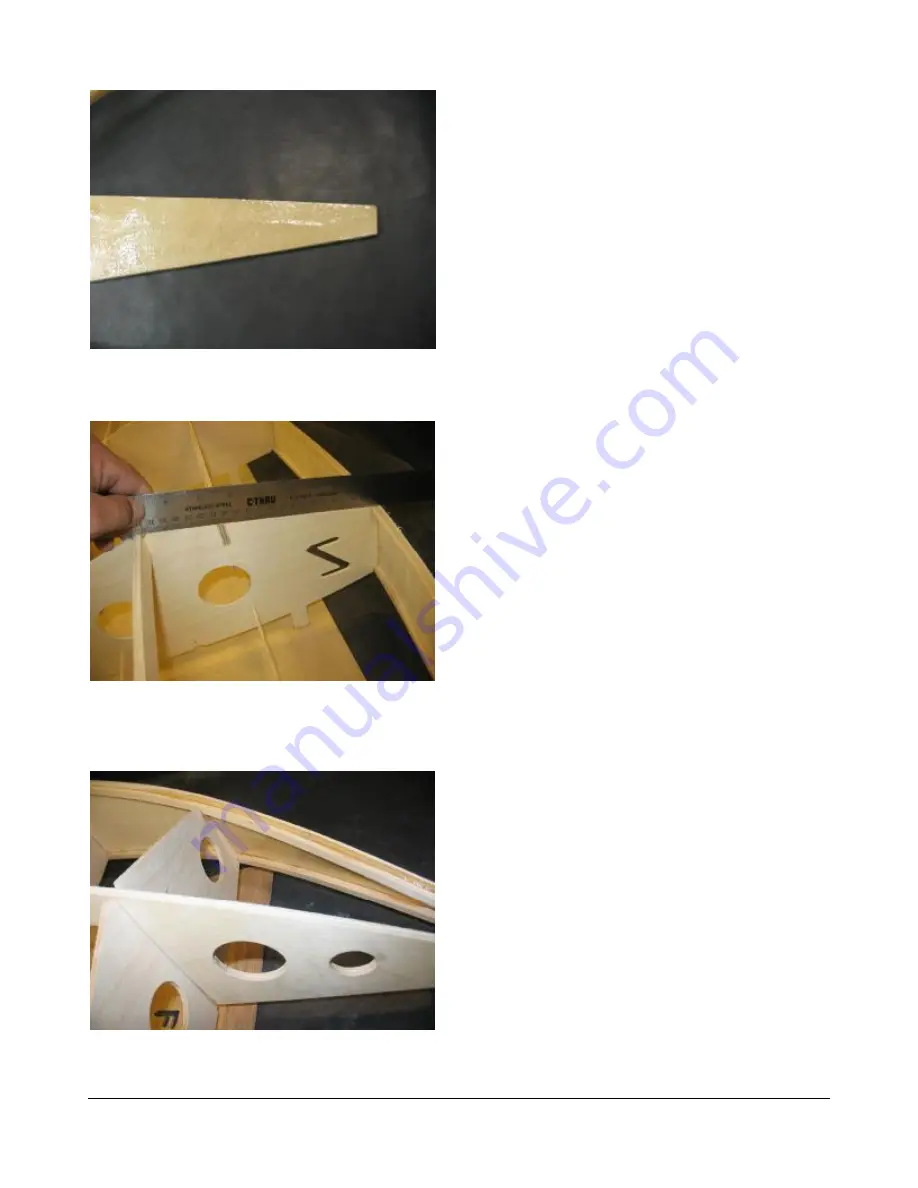
12
Epoxy on front inside of side sheeting.
Checking the keel, bulkhead and side sheeting for
flatness.
Side sheeting before trimming.
Using 30 minute epoxy, mix up about 1/2 ounce.
Stir very well.
Using a small stick or acid brush, coat the stringers
and bulkhead edges. Work quickly.
Make sure that all surfaces that will touch the
sheeting are coated. Try not to use so much that it
runs all over. Brush epoxy on the front 6 inches or
so of the side, to help strengthen the high stress
nose area.
Align the marks and start clamping, adjusting the
sheeting for equal overlap on the top and bottom.
Clamp thoroughly, but be careful not to distort the
stringers.
Using a new mixing container and applicator, do the
other side. You may have to trim the front tip of the
first side, so the second side fits.
Allow to cure at least 1 hour.
Bottom Sheeting
When the glue is fully cured on the side sheeting,
plane and sand the side sheeting and stringers to
match the angle and contour of the bulkheads.
Time to get intimate with your wood plane. If you
don’t have one, stop here. Go to the store and buy
one. Really.
The mistake most people make with wood planes is
trying to take off too much wood.
If you try to plane with the blade too deep, you will
gouge and split the wood.
Adjust your plane to remove about 1/64 of an inch
of material or so.
If you have never used a plane, practice on some
scrap wood before planing the sides.
What we are trying to do with the plane is to shave
the stringers and side sheeting to match the angle
of the bottom.
Starting from the rear, hold the plane at the same
angle as bulkhead 5.
Summary of Contents for I-BOX
Page 8: ...I B O X N B O X 6...















































